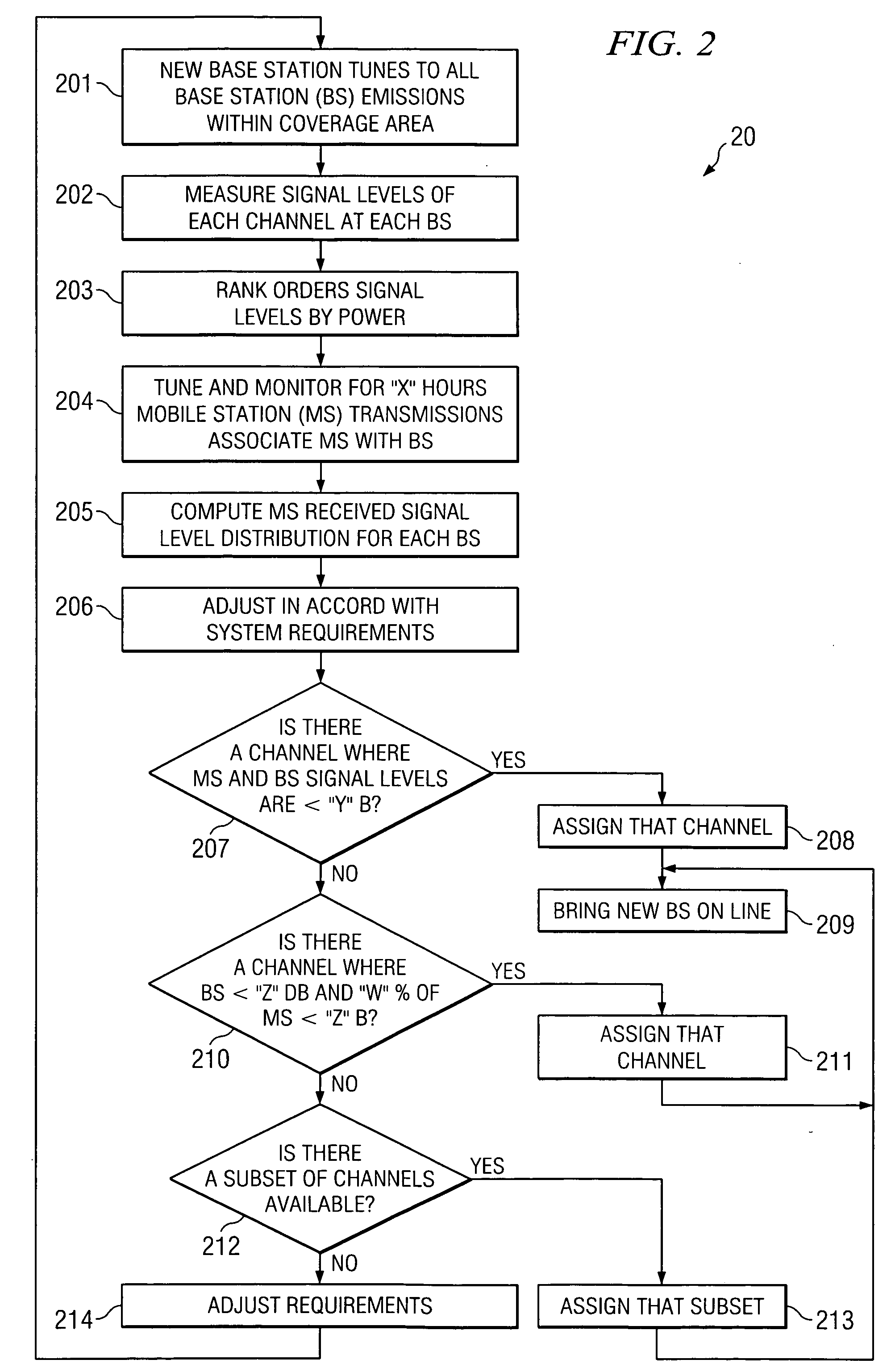Systems and methods for coordinating the coverage and capacity of a wireless base station
a wireless base station and wireless network technology, applied in the field of wireless communication, can solve the problems of mobile devices most likely experiencing interference, power level reduction, and base station location, and achieve the effect of improving overall network coverage and capacity
- Summary
- Abstract
- Description
- Claims
- Application Information
AI Technical Summary
Benefits of technology
Problems solved by technology
Method used
Image
Examples
Embodiment Construction
[0017]FIG. 1A shows wireless network 10 initially having one base station 11 with coverage area defined by dotted line 12. Transmission and other control to / from base station 11 is controlled by base station controller 121 in conjunction with central control (NOC) 120 which could be co-located with a base station, if desired. Contained within base station controller 121 is a database and at least one software program which controls transmission to / from the base station as is now well known. As will be seen, while transmission from base station 11 can, in theory, reaches out to point 104, transmissions to and from that location would most probably be unsatisfactory because of low energy. Since mobile devices, such as cell phones, PDAs, computers, two-way pagers and the like, do not transmit with as much energy as does a base station, most wireless devices would not be able to transmit as far as does the base station and thus the actual coverage area would be even less than shown by d...
PUM
 Login to View More
Login to View More Abstract
Description
Claims
Application Information
 Login to View More
Login to View More - R&D
- Intellectual Property
- Life Sciences
- Materials
- Tech Scout
- Unparalleled Data Quality
- Higher Quality Content
- 60% Fewer Hallucinations
Browse by: Latest US Patents, China's latest patents, Technical Efficacy Thesaurus, Application Domain, Technology Topic, Popular Technical Reports.
© 2025 PatSnap. All rights reserved.Legal|Privacy policy|Modern Slavery Act Transparency Statement|Sitemap|About US| Contact US: help@patsnap.com



